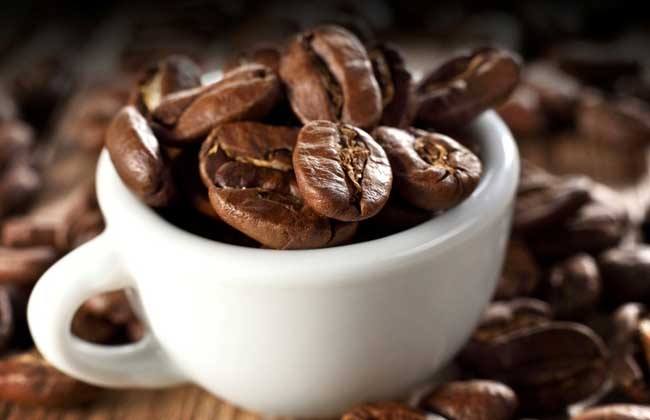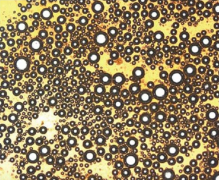Is Panamanian coffee good? the characteristics of Panamanian coffee.
Follow the caf é (Wechat official account vdailycom) and found that Beautiful Cafe opened a small shop of its own.
The microclimate of the Panamanian highlands is the most important resource that makes Panamanian coffee unique. The most important resource that makes Panamanian coffee unique is its microclimate. The east-west environment of the Republic of Panama converges cold air over 6500 feet through the Central Mountains, creating a variety of microclimates in the Boquete and Volc á n-Candela regions, making it a major source of Panamanian coffee. These unique coffees are grown in nutritious and balanced land located in the Baru volcano region.

The characteristics of Panamanian coffee:
Panama coffee is smooth, light and sour, and its excellent thousand-week coffee beans are pure and distinctive.
Flavor: full granules and good quality
Suggested baking method: medium baking
Full name of the country: Republic of Panama
Population: about 3.3 million
Capital: Panama City
Language: Spanish
Annual output of coffee: 90,000 tons
Brewing high-quality and characteristic coffee from a special environment
In recent years, Panama has begun to be known by coffee lovers as a producer of high-quality coffee. Panama's boutique coffee is mainly produced in the province of Provincia de Chiriqu í on the border with Costa Rica.
Panama's most historic and famous coffee producing area is located in the Boquete region to the east of Mount Baru. The reason why it is concentrated in this area is that Poquette is a foggy place, so the coffee has excellent quality and characteristics. The infrastructure such as roads and processing facilities in Boguet is quite complete. as far as the production place of coffee is concerned, it has a complete natural environment, and in recent years it has been very popular with the value of sightseeing. Gradually, many operators have given up the farm and began to welcome new business opportunities. This is the current situation of coffee production in Panama.
The way of refining Panamanian coffee is to adopt the traditional washing style. First peel off the pulp, then put the fruit wrapped in the endocarp into a tank to ferment, and finally go through the traditional washing. As for the drying process, the most common exposure method is used.
As far as varieties are concerned, although Tibika and bourbon are also planted, Kaddura and Kaduai account for most of the planting.
High-profile place of origin: jadeite Manor Hacienda La Esmeralda
The first harvest of geisha, a representative manor in Panama
The well-known agricultural garden in Bogut is also famous for its birthplace of geisha.
Farm owner: Peterson
Location: Boquette region, Chiriki province
Agricultural land area: about 6.5 hectares
Average altitude: about 1600m
Cultivated varieties: geisha, etc.
Refining method: washing type
Polina Farm La berlina is one of the few gardens that still retain rare Tibica varieties.
In the farm at an altitude of 1300m to 1650m in Boguet, the Tibica variety is refined by washing, then dried by sunlight, and finally treated by a dryer.
Refined Refinement adopts traditional washing method.
The Panamanian method of refining is to peel off the pulp, put the endocarp into a tank to ferment, and finally wash the traditional washing method. And the use of daylight drying is the last general practice.
Important Notice :
前街咖啡 FrontStreet Coffee has moved to new addredd:
FrontStreet Coffee Address: 315,Donghua East Road,GuangZhou
Tel:020 38364473
- Prev

Columbia Coffee Bean Flavor description Information planting History of characteristic producing areas
Professional barista exchanges please pay attention to the aroma of coffee workshop (Wechat official account cafe_style) aroma and fruit acid is the most prominent feature, toast-like aroma, obvious fruit acid spread after entering the throat, followed by mellow aftertaste and bitterness. It is highly compatible with other coffees, so it is also used in Colombia, which adds aroma and mellowness to high-quality mixed coffee.
- Next

How to characterize the quality of Colombian Coffee Bean and its planting History
Exchange of professional baristas follow the coffee workshop (Wechat official account cafe_style) Columbia Coffee Bean was renamed in 1886 in honor of Columbus, the discoverer of the American continent. Colombia has beautiful mountains and rivers, beautiful scenery, pleasant climate, spring all year round, fresh air and refreshing air. Walking in the streets of Bogota, the capital, I feel relaxed and happy. Weeping willows with green branches and green leaves
Related
- Detailed explanation of Jadeite planting Land in Panamanian Jadeite Manor introduction to the grading system of Jadeite competitive bidding, Red bid, Green bid and Rose Summer
- Story of Coffee planting in Brenka region of Costa Rica Stonehenge Manor anaerobic heavy honey treatment of flavor mouth
- What's on the barrel of Blue Mountain Coffee beans?
- Can American coffee also pull flowers? How to use hot American style to pull out a good-looking pattern?
- Can you make a cold extract with coffee beans? What is the right proportion for cold-extracted coffee formula?
- Indonesian PWN Gold Mandrine Coffee Origin Features Flavor How to Chong? Mandolin coffee is American.
- A brief introduction to the flavor characteristics of Brazilian yellow bourbon coffee beans
- What is the effect of different water quality on the flavor of cold-extracted coffee? What kind of water is best for brewing coffee?
- Why do you think of Rose Summer whenever you mention Panamanian coffee?
- Introduction to the characteristics of authentic blue mountain coffee bean producing areas? What is the CIB Coffee Authority in Jamaica?

